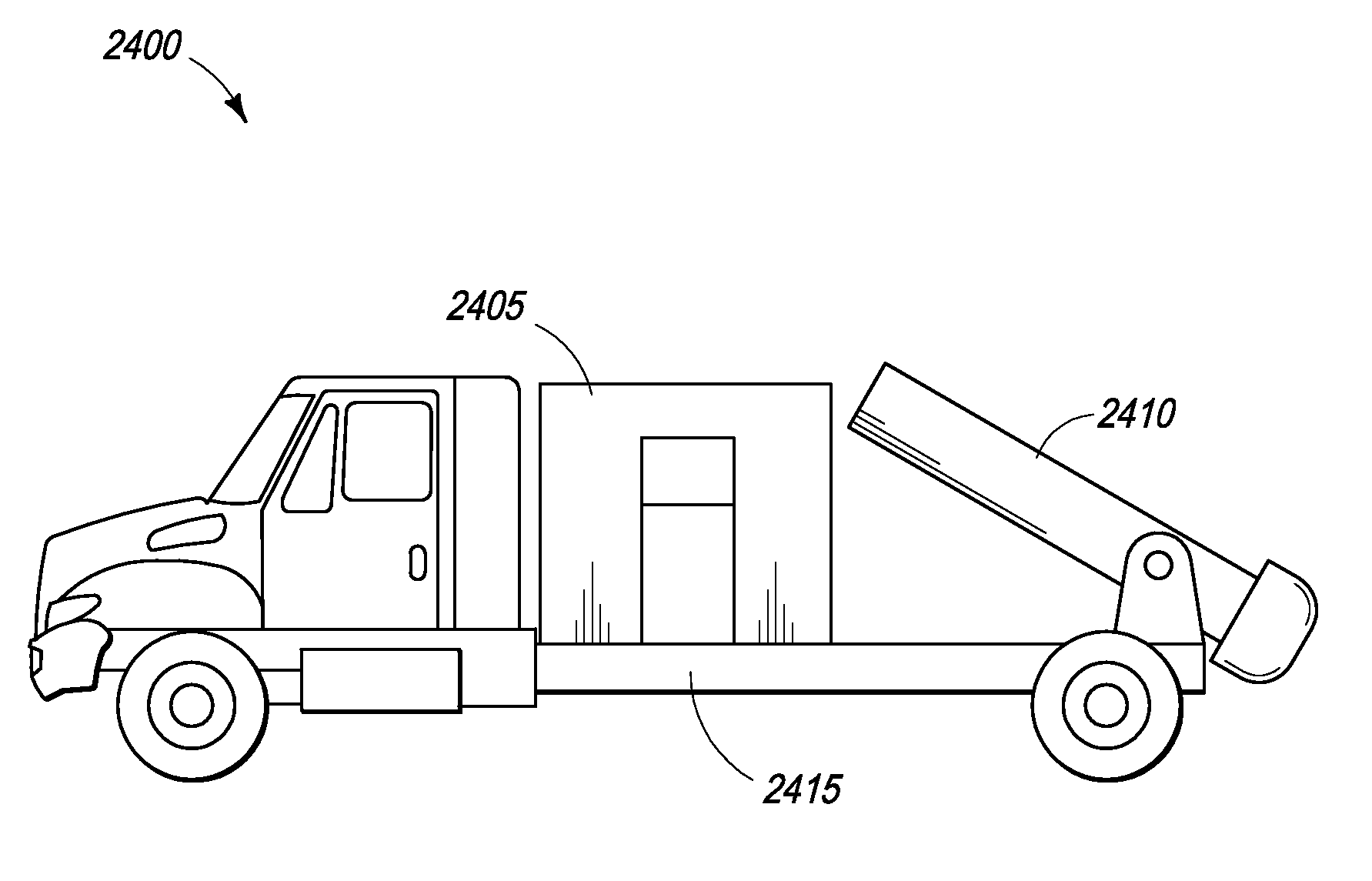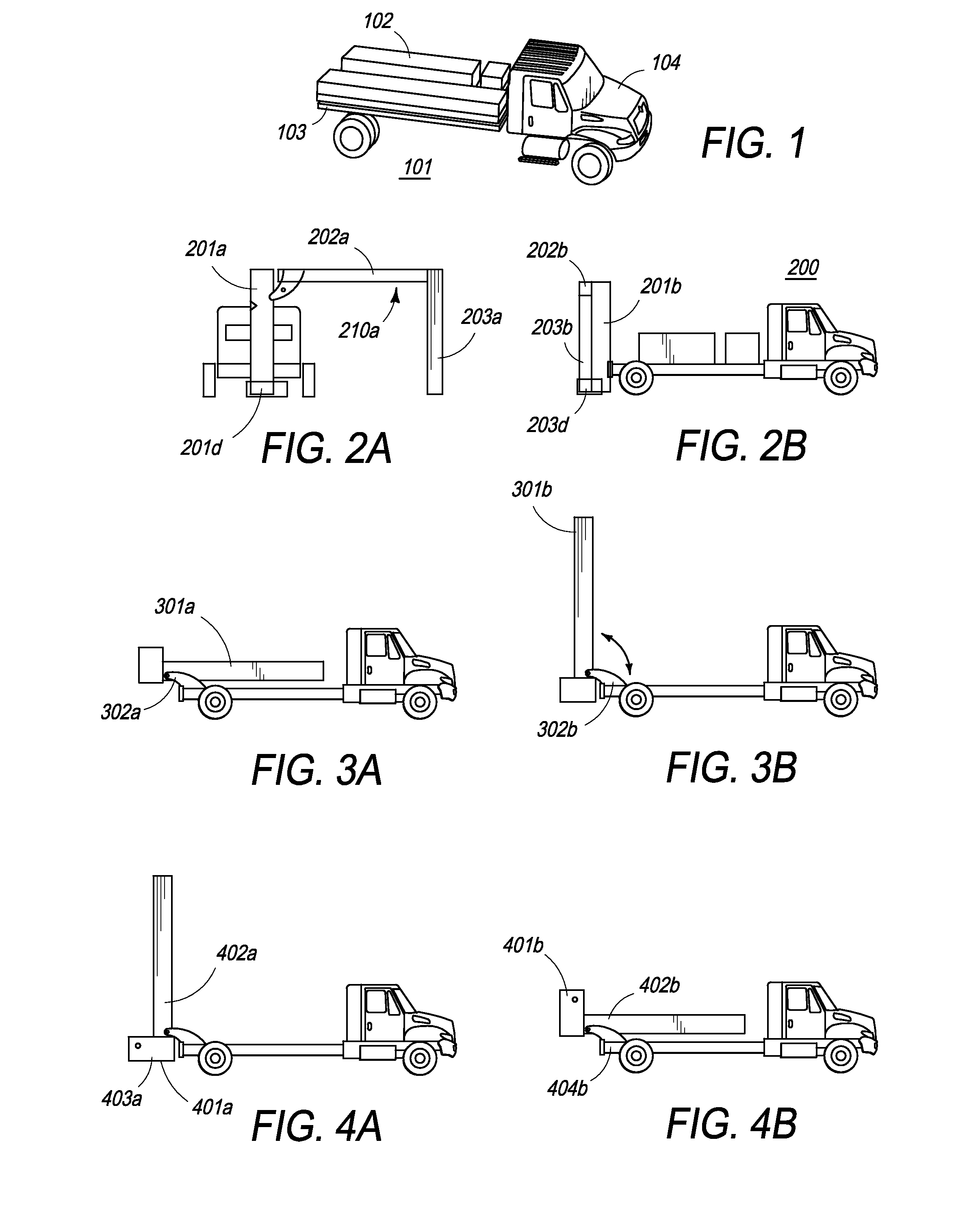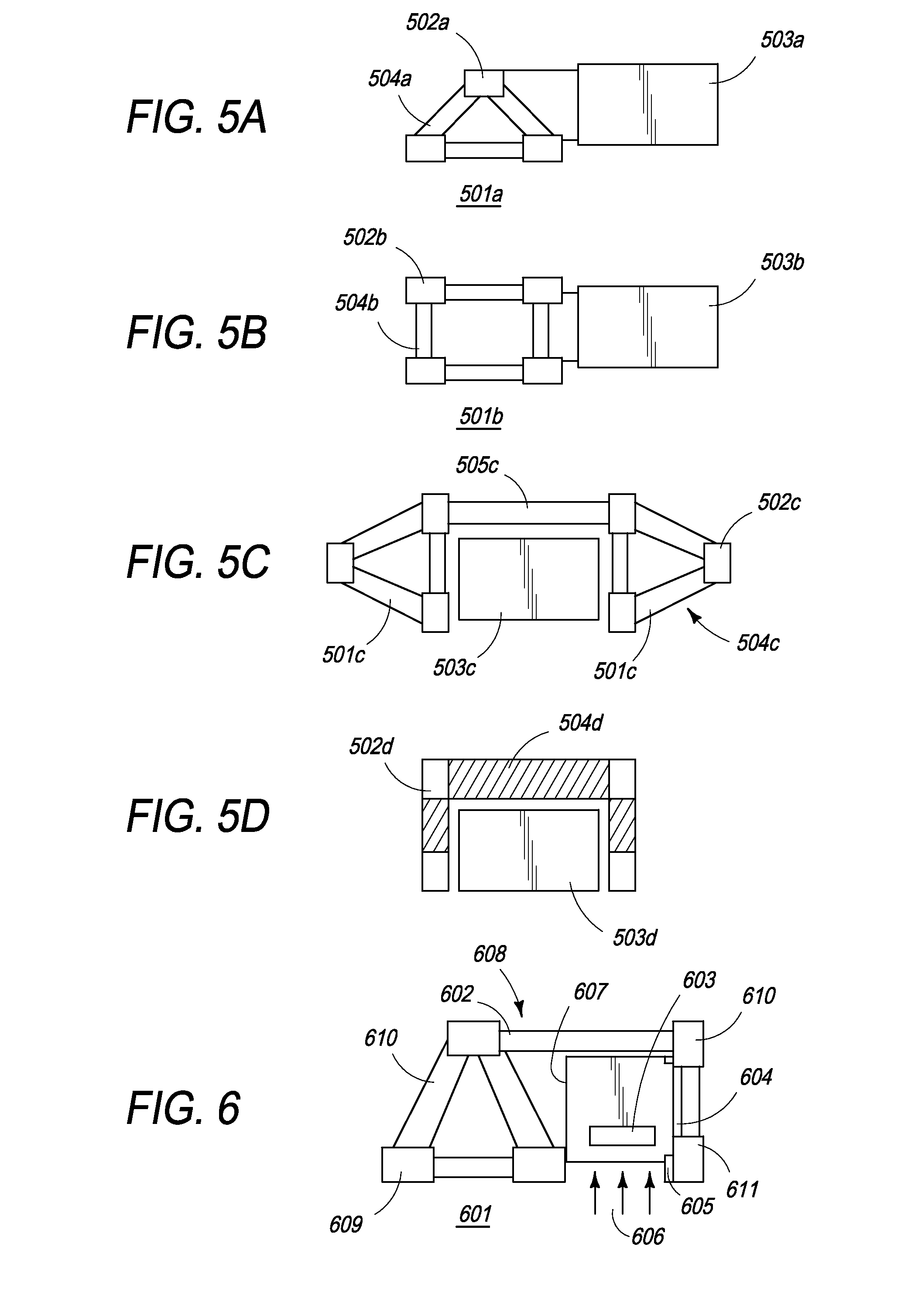Compact Mobile Cargo Scanning System
a cargo scanning and mobile technology, applied in material analysis, material analysis using wave/particle radiation, instruments, etc., can solve the problems of inability to achieve typical scenarios, inability to easily modify, and insufficient spa
- Summary
- Abstract
- Description
- Claims
- Application Information
AI Technical Summary
Benefits of technology
Problems solved by technology
Method used
Image
Examples
Embodiment Construction
[0087]The present invention is directed towards a portable inspection system for generating an image representation of target objects using a radiation source, comprising a mobile vehicle; a detector array physically attached to a single, movable boom having a proximal end and a distal end and at least one source of radiation wherein the radiation source is fixedly attached to the proximal end of the boom and adjustable to a desired scanning height. The image is generated by introducing target objects between the radiation source and the detector array, thereby exposing objects to radiation and subsequently detecting the radiation. The boom can be unfolded from a first stowed configuration to a second deployed and operational configuration.
[0088]The system of the present invention is advantageous in that it provides a highly compact stowed configuration and has a low height, such that the highest part of the boom does not exceed the height of the drive cab, among other benefits. The...
PUM
 Login to View More
Login to View More Abstract
Description
Claims
Application Information
 Login to View More
Login to View More - R&D
- Intellectual Property
- Life Sciences
- Materials
- Tech Scout
- Unparalleled Data Quality
- Higher Quality Content
- 60% Fewer Hallucinations
Browse by: Latest US Patents, China's latest patents, Technical Efficacy Thesaurus, Application Domain, Technology Topic, Popular Technical Reports.
© 2025 PatSnap. All rights reserved.Legal|Privacy policy|Modern Slavery Act Transparency Statement|Sitemap|About US| Contact US: help@patsnap.com



